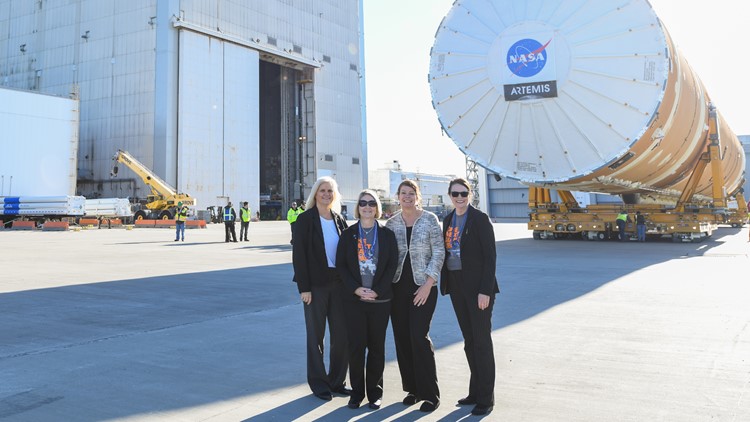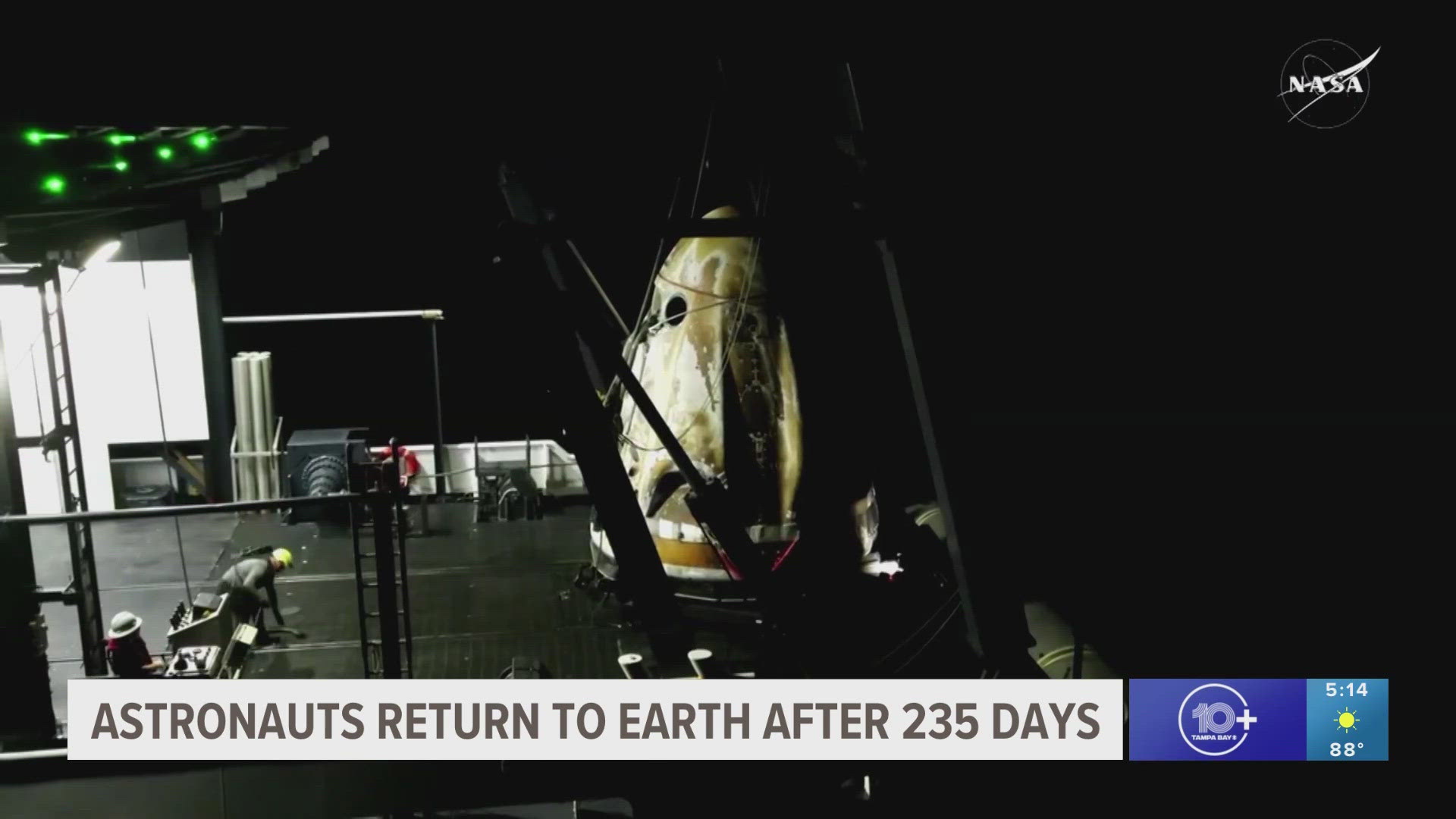CAPE CANAVERAL, Fla. — Behind the building and testing of the 212-foot-tall rocket stage that looks to bring the first woman and next man to the Moon in 2024 are four women.
The prowess of stages element deputy manager Lisa Bates, Boeing Michoud production/operations manager Jennifer Boland-Masterson, NASA Stages element manager Julie Bassler and Boeing chief engineer Noelle Zietsman have brought the Space Launch System (SLS) rocket stage to life.
All-in-all, the group of women has 90 years of experience in the aerospace and defense industries, according to NASA.
Part of their work included managing the entire scope of design, development and testing and production of the "complex" core stage set to power the heavy-lift rocket and future lunar missions.
The first core stage for NASA's Artemis I mission, an uncrewed test flight, is currently undergoing its "Green Run test series" at Stennis Space Center near Bay St. Louis, Mississippi. The tests allow the agency to confirm the rocket's core stage is ready for future launches.
"Artemis I will be an uncrewed flight to test the SLS rocket and Orion spacecraft as an integrated system ahead of crewed flights to the Moon with the Artemis program," NASA wrote.
Through the Artemis program, NASA also looks to establish sustainable lunar exploration by the end of the decade.
The 2024 mission would make history by putting the first woman on the Moon. That's a feat that was not accomplished between astronaut Neil Armstrong putting the first boots down to astronaut Harrison Schmitt becoming the last American to walk on the Moon in 1972.
During that timeframe, 12 men had the chance to step foot on the lunar surface.
- Florida will lower COVID vaccine age requirement to 60 next Monday
- Oprah shares more from the interview with Meghan and Harry on CBS This Morning
- Sex offender on the run for 21 years lived under fake name in Pasco County, US Marshals say
- Coronavirus pill shows promising feedback in early testing
- Who gets $1,400 checks in the COVID-19 bill the Senate passed?
- What to know as Derek Chauvin becomes the first officer tried in George Floyd's death
►Breaking news and weather alerts: Get the free 10 Tampa Bay app
►Stay In the Know! Sign up now for the Brightside Blend Newsl



